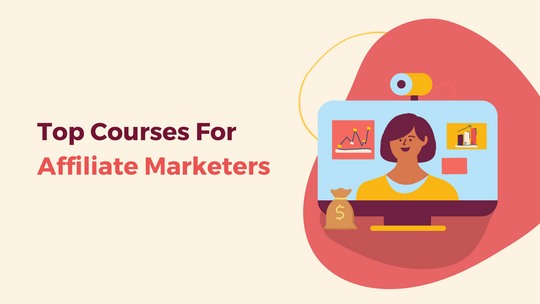
How To Build A Simple Lead Scoring Model
You’ve got a ton of inbound leads flowing in, but how do you know who’s really interested and who’s just browsing? It’s time to find out about lead scoring.
In the article, we’re covering:
What is lead scoring?
Lead scoring is a way to place a value on each lead your B2B sales and marketing teams are currently working on.
Often it’s an actual numerical score out of 100. You can score your leads any way you choose; there are various models that you can implement.
Most companies score their leads using criteria based on how well they fit their ideal customer profile (ICP) and engagement with the brand.

Why do sales and marketing teams need lead scoring?
The main reason why B2B organizations need lead scoring is simple:
You only have a certain number of reps and a finite number of hours in the day!
On-Demand Video Course On Native Advertising
Boost your ROAS with native ads. Enroll now with our limited 30% discount.
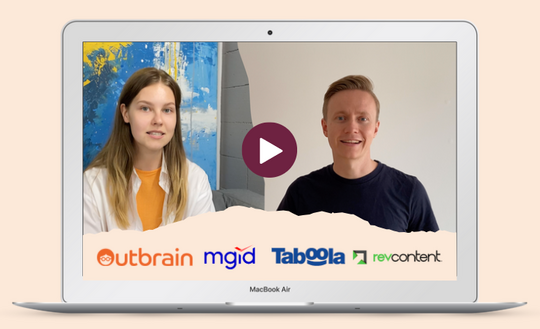
When you have a large number of leads, you need to know where to allocate your time. Lead scoring is a way to prioritize your leads, so your reps spend their time working on the prospects who are most likely to become customers in the shortest amount of time.
Lead scoring also helps reps respond quickly to inbound inquiries or statements of intent from leads. So often in sales, the first rep to reach out to an interested prospect ends up with the deal ahead of the competition.
When you incorporate intent data into your lead scoring and have up-to-the-minute accurate contact data, you can create that ‘drop everything’ moment and be the first to make contact.
For marketers, lead scoring can be a helpful way of evaluating which channels bring in the best leads.
For example, if leads that come through from a webinar score an average of 50, but leads that come from an eBook download only score an average of 25, it’s a sign that you should do more webinars and fewer eBooks.
Why is lead scoring important?
When you incorporate lead scoring into your sales and marketing operation, it normally leads to better results, including:
- More effective marketing campaigns - as marketers are able to identify the worst- and best- performing approaches for driving highly relevant leads.
- Improved conversion rates – as salespeople are more likely to contact prospects when they’re actually looking to purchase.
- Lower customer acquisition costs – as higher conversion rates result in higher profits and lower acquisition costs.
Lead scoring models
Your goal when scoring leads is to identify the leads who are the most ‘sales ready’.
For different companies, the buyer’s journey looks different. While an agency priotitizes the prospect’s budget when analyzing their profile, a SaaS company will focus on user engagement. Therefore, there are several lead scoring models that take different criteria into consideration.
Here are some of them.
Suitability scoring
This is the first and simplest method of lead scoring. It’s also called explicit scoring and is based around demographic, firmographic, and technographic criteria, including:
- Location - is the lead working in the right territory for your product/service?
- Industry - is the lead working in the right sector for your product/service?
- Company size - is the lead’s company in the best position to buy right now?
- Annual revenue - is the lead’s company revenue similar to the revenue of your ideal customer persona?
- Technology - is the lead using a similar tool or competitor?
If the lead fits the bill for all of the above, then you can assign them the highest lead score. You can also give them partial lead scores if they fit some, but not all, of the above.
Seniority scoring
This method of lead scoring takes into account a lead’s seniority (which affects their role in the decision-making process). It works like this:
- Junior-level employee - typically, these are assigned a low lead score. However, there are cases where junior- and mid-level employees actively participate in the decision-making process.
- Mid-management employee - assign them a higher lead score (but not the highest).
- Director/Department Head - assign them a higher lead score than mid-management.
- Chief Executive/C-suite - assign them the highest lead score.
In this method, leads with real decision-making powers (Chief Execs/the C-suite) are prized the highest.
Typically, B2B companies combine this model the suitability scoring model.
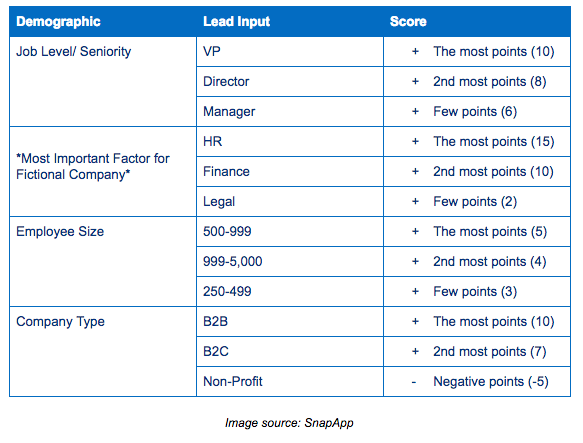
Activity scoring
Also known as implicit or behavioral scoring, this method of lead scoring is based on a lead’s engagement with your company/brand. Points are awarded to a lead if they exhibit some or all of the following behaviors:
- Visiting your website.
- Interacting with your social media.
- Opening an email.
- Subscribing to your newsletter.
- Filling out a form.
- Downloading your content.
- Attending a webinar.
- Requesting a meeting or demo.
On-Demand Video Course On Native Advertising
Boost your ROAS with native ads. Enroll now with our limited 30% discount.

Here’s how one of the possible flows might look:
- Each time a lead opens an email, reads to the end, or clicks on a link, they receive 10 points.
- After engaging with your social media, they receive additional 15 points.
- If they call in and ask to speak to a salesperson, you have a high-scoring lead.
A more detailed template for the activity scoring model includes the following criteria:
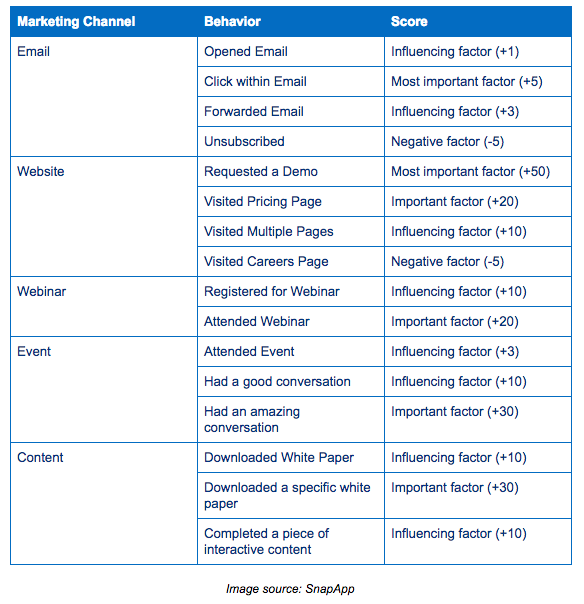
Negative scoring
You should also be looking to take away points to reflect how B2B leads go cold. This is known as negative lead scoring.
Things that might cause you to subtract points from your lead score include:
- If a lead is from a company that isn’t in your target market or territory.
- If a lead changes job/switches careers and is no longer a good prospect for your product/service.
- If a lead hasn’t engaged with your brand for a specific number of days, even if they had engaged on a deeper level before.
- If a lead visits your website but immediately clicks off - this lack of engagement indicates they might have stumbled on your site by mistake.
- If a lead visits your website but only browses your jobs pages - this is a sign they’re interested in applying for a position, not in buying from you.
The bespoke scoring model
It can be that none of the existing models works for your specific business objectives. And it’s fine.
All these models are just templates helping you to build your lead scoring model. Pick one or two models to start with and adapt it.
Create your own lead scoring model by taking the most helpful criteria from different models.
To identify how well an inbound lead fits your ICP, you can place questions on landing page forms to get information like job title, company size, location, and industry. Then you can award (or subtract) points based on their answers and how well they fit your target profile.
As a result, this is what your perfect scoring might look like:

You can put your own priorities on top of each circle.
How do you build a lead scoring model?
How do you know what matters when choosing your lead scoring criteria? What methods are best for evaluating leads and assigning points? How do you ensure your teams keep following the process?
Here are the 3 steps you need to build a lead scoring model and make it work:
1 - Follow the data
Analyze your historical data on:
- What channels do your clients typically come from?
- What’s the most common problem do these people want to solve?
- What’s your ideal customer’s budget?
- What kinds of leads become customers?
- What do they do before they make their purchase?
- How would your salespeople describe your ideal customer?
With the answers, you’ll know who your ideal customer is. A person who fits the description perfectly will be given a score of 100.
2 - Choose a model to start with
What’s the base you’ll build your own model on? Of all the criteria that matter for you, which one or two are the most important?
Is it the budget that matters to you the most? Build your contact form in a way that encourages a lead to specify their budget. Assign 20 points to those whose budget fits the one of your ideal prospect. Then include less important but meaningful parameters, like the seniority level, their activity, etc.
3 - Automate the process
Do you feel you can score leads manually? That’s the wrong way to go. By automating the process, you won’t need to get back to it when you scale lead generation.
If you use a CRM tool, it’s likely to offer built-in functionalities for assigning points to each action taken by a lead.
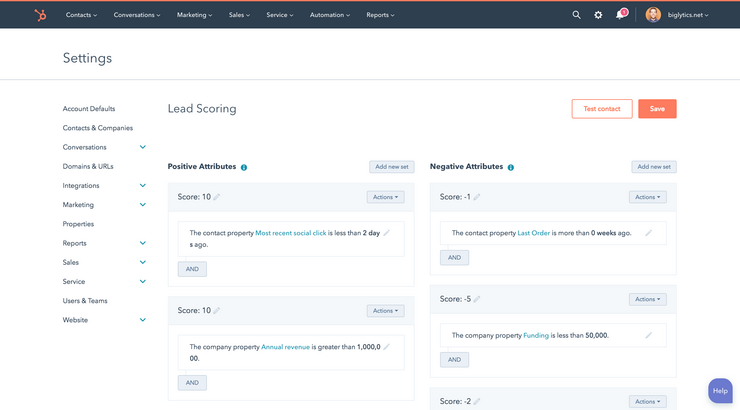
If you don’t rely on a quality CRM solution yet, you can build a simple lead scoring calculation in Google Sheets.
After you integrate your lead capture form with Google Sheets, go create one more column next to the data extracted from submissions. The column will be called ‘Score.’ With the right formula, you can build a setup that assigns points automatically.

Intent data in lead scoring
Another great resource for lead scoring is intent data.
Intent data is information on your prospects’ web activity that can signify whether they’re interested in your product or ready to buy.
Here are the different categories of intent data:
Anonymous first-party intent
This is when a person visits your company website, their IP address is recorded and then registered to their company name.
With this type of intent data, you can personalize the content on your website to match the visitor and their company.
Known first-party intent
This is when a person visits your company website and completes a form. They are tagged as “known” because they’ve voluntarily supplied you with their contact details.
With this type of intent data, you can track their page views across your website. It means you can see which pages they’re most interested in/spending time on. Then, you can reach out to them using the content they’ve engaged with as a springboard. Anonymous third-party intent
This is when a person visits a website that you don’t own, but is relevant to your business or industry. For example, if they click on a competitor’s site or an online review of your product/service.
This type of intent data highlights when a prospect is investigating solutions like yours or researching your brand - meaning you can swoop in early with a pitch.
On-Demand Video Course On Native Advertising
Boost your ROAS with native ads. Enroll now with our limited 30% discount.

Known third-party intent
This is when a person visits a website that you don’t own and completes a form/takes an action. For example, if they register for a webinar based on a topic that’s relevant to your business.
This type of intent data can be used to start a conversation and increase your brand’s awareness.
How intent data makes lead scoring more accurate
When you have this data, you can reach out to leads at the right time, before your competitors even know that they’re looking at a solution.
Incorporate intent data into your lead scoring by assigning points for web activity such as visiting your site, browsing a certain number of pages, or filling out a form.
You should also give points if a lead visits a competitor’s site, as it means they have a problem that you can solve.
This guest post was provided by Cognism. Follow Cognism on LinkedIn
Looking for more actionable B2B sales content?
Every day, the Cognism team publishes the best of our content on the world’s most popular professional social network.

 Feed
Feed
